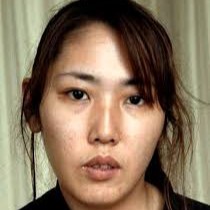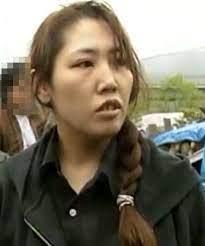
b: 1973
Suzuka Hatakeyama
Summary
Name:
Suzuka HatakeyamaYears Active:
2006Birth:
February 02, 1973Status:
ImprisonedClass:
Serial KillerVictims:
2Method:
Drowning / StrangulationNationality:
Japan
b: 1973
Suzuka Hatakeyama
Summary: Serial Killer
Name:
Suzuka HatakeyamaStatus:
ImprisonedVictims:
2Method:
Drowning / StrangulationNationality:
JapanBirth:
February 02, 1973Years Active:
2006Date Convicted:
March 19, 2008bio
Suzuka Hatakeyama was born in Noshiro, Akita Prefecture, Japan, on February 2, 1973. From a young age, she appears to have had a troubled social life. According to reports from TV Asahi’s Super Morning, Hatakeyama’s sotsugyō bunshū—a kind of graduation yearbook essay—was filled with harsh insults from her classmates. These writings suggest that she was severely bullied (ijime) throughout her school years, which likely contributed to her later isolation and emotional difficulties.
As an adult, she was a single mother living in Akita Prefecture with her daughter Ayaka. Neighbors described her as moody and withdrawn.
murder story
On April 9, 2006, Hatakeyama committed her first murder. She took her 9-year-old daughter Ayaka to a bridge and pushed her over the edge into the river below. Later, she told investigators she no longer wanted to see her daughter. Ayaka’s body was found several kilometers downstream. Initially, authorities concluded that her death was a tragic accident.

In an unusual twist, Hatakeyama insisted publicly that her daughter’s death was actually murder by someone else and pressured police to reopen the investigation—an apparent tactic to deflect suspicion from herself.
Her behavior quickly drew attention. As scrutiny increased, Hatakeyama attempted to distract investigators and the public by committing a second killing. On May 17, 2006, she lured her 7-year-old neighbor, Goken Yoneyama, away from his home. She then drowned him, staging another accidental death.
The ruse did not work. By June 4, police had enough evidence to arrest her. Investigators cited her inconsistent statements and false alibis as key reasons for her capture.
On March 19, 2008, the Akita Regional Court sentenced Hatakeyama to life imprisonment with hard labor. The prosecution had requested the death penalty, while her defense attorney had argued for a lesser penalty. Both sides appealed: the prosecution to impose capital punishment, the defense to reduce her sentence.
On May 25, 2009, the Akita High Court rejected both appeals and upheld the original sentence. Hatakeyama’s life imprisonment was confirmed. She remains incarcerated in Japan, serving her sentence for the calculated killings of her daughter and neighbor.
Her case, known as the Akita Child Murder Case, deeply shocked Japan and is often cited as an example of extreme familial violence and the potential long-term consequences of social isolation and bullying.